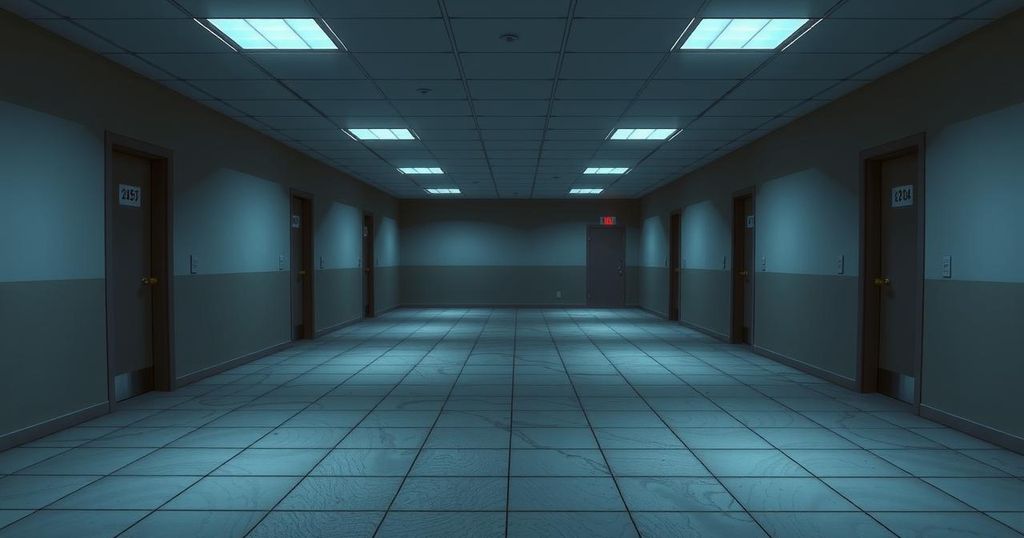Rising Bankruptcy Filings Among Brazilian Publicly Listed Companies

More than 20 publicly traded companies in Brazil are seeking bankruptcy protection or restructuring, with an anticipated increase by 2025 due to high interest rates. Recent notable cases include Oi and Americanas, along with rising leverage ratios among listed firms. Experts warn of worsening conditions for various companies and foresee heightened corporate consolidation amidst this crisis.
In Brazil, over 20 publicly traded companies are currently seeking bankruptcy protection or pursuing out-of-court restructuring, with projections indicating an increase in this number by 2025. This rise is attributed to the challenges businesses face in meeting their debt obligations, exacerbated by persistently high interest rates. Experts foresee another year marked by significant corporate financial distress in the country.
Some prominent cases include Bombril, a consumer goods company, and Agrogalaxy, an agribusiness group. Oi, a telecom operator, is undergoing its second bankruptcy protection filing, while retailer Americanas has sought court protection following revelations of substantial accounting fraud. The high levels of debt that these publicly listed companies carry are complemented by regulatory requirements for financial disclosures, which also illuminate issues faced by smaller entities that often suffer even greater distress.
A recent analysis by Valor Data of 52 companies within Brazil’s Ibovespa stock index reveals that the average leverage among these firms has risen from 1.47 to 1.64 times. Fabiana Solano from Felsberg Advogados warns that financial crises are increasingly affecting even larger firms: “Persistently high interest rates and global instability are having an immediate impact on businesses.”
Among the troubled firms is OSX, a shipbuilding and offshore services company controlled by Eike Batista, which is also in its second bankruptcy protection process. Additionally, energy company Light has been under restructuring since 2023. On the other hand, the textile manufacturer Teka, which has been under bankruptcy protection for more than a decade, recently secured an order for liquidation.
The tally of bankruptcy filings might be even higher if not for the successful debt restructurings achieved by companies like Azul and Infracommerce via bilateral negotiations. Other companies, such as Aeris and Viveo, are in discussions with creditors to circumvent more severe actions.
While publicly traded companies usually enjoy easier access to credit, the equity market remains stagnant. Investor aversion and capital outflows from equity funds have left few opportunities, with the sole anticipated stock offering in recent months being from insurance company Caixa Seguridade, prompted solely by compliance with B3’s liquidity standards.
Current regulations dictate that publicly traded companies seeking bankruptcy protection are excluded from B3’s theoretical indexes, although their shares can still be traded. This policy was introduced following the X Group’s collapse, which had previously included several highly liquid stocks.
Roberto Zarour from Lefosse Advogados highlighted the stringent disclosure obligations for listed companies, emphasizing the difficulty of maintaining transparency while navigating confidential negotiations. Marcelo Ricupero from Mattos Filho noted the increasing incidence of financial distress among listed firms, stating, “No company is immune to the current turbulence. The trend is for more cases to emerge.”
Zarour added that the challenges of debt restructuring among well-governed public companies further illustrate the struggles faced by smaller firms, many of which accrued debt when interest rates were low but now grapple with high borrowing costs. Laura Bumachar from Dias Carneiro Advogados anticipates an even harsher landscape in 2026, stating, “Many companies are barely managing to keep up.”
The ongoing crisis is likely to lead to greater market concentration, as more robust firms with capital will pursue mergers and acquisitions, capitalizing on the predicament of weaker firms. Ricupero observed that such distressed M&A activity is on the upswing. Light confirmed the approval of its restructuring plan and reported that creditor interest in converting debt into equity surpassed expectations.
Azul reaffirmed its prior statement on creditor negotiations, emphasizing that these agreements are poised to enhance cash flow over the next three years. Aeris maintains that its financial discussions are transparent and unrelated to bankruptcy protection. Viveo mentioned successful renegotiations of its debt schedule recently. Teka stated that liquidating while continuing operations minimizes uncertainty and maintains commitment to business continuity, despite potential shareholder concerns.
Infracommerce announced a restructuring plan to readjust its capital structure, initiated in collaboration with financial institutions and new investors and executed independently of bankruptcy protocols. Other companies, including Agrogalaxy, Americanas, Oi, and OSX, declined to comment, and Bombril did not respond.
The financial landscape in Brazil’s public corporate sector is increasingly precarious, with over 20 companies utilizing bankruptcy protection. The persistent challenges posed by high interest rates are compelling firms to restructure or preemptively seek court intervention. Noteworthy cases, such as Oi and Americanas, highlight widespread distress, while experts anticipate further complications in the coming years, including an increase in market concentration through distressed M&A activity. Overall, a significant tumult is expected as firms continue to navigate these financial hardships.
Original Source: valorinternational.globo.com








